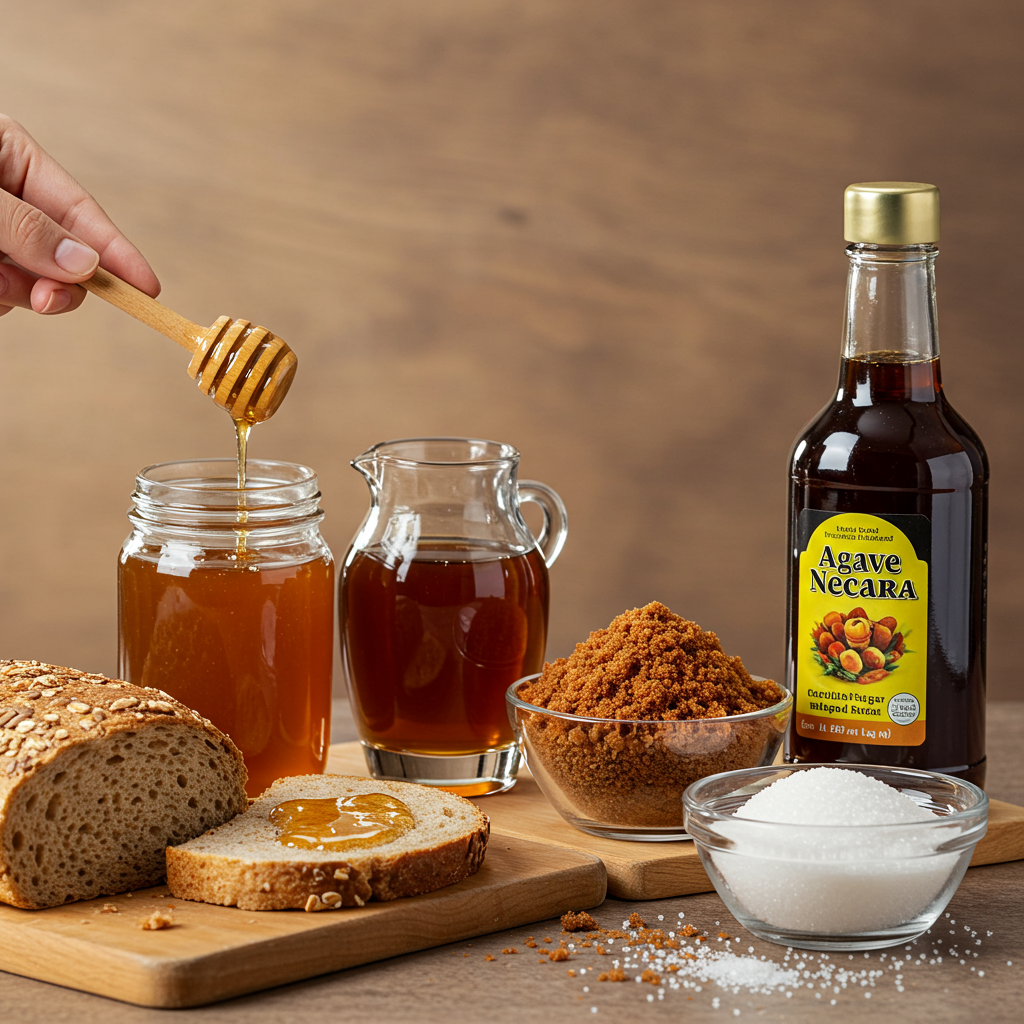The Sweet Deception: Why "Natural" Sugars Like Honey Aren't Blood Sugar Heroes
In the world of nutrition, few topics generate as much confusion as sugar. Walk down any health food store aisle and you'll find products proudly labeled "made with natural sweeteners" or "sweetened with honey, not sugar." The marketing narrative is clear: natural sweeteners are portrayed as healthier alternatives to processed sugar. But when it comes to blood glucose response, is there really a meaningful difference?
The Natural Sugar Fallacy
Many of us fall victim to what I call the "natural sugar fallacy" - the belief that because something comes from nature with minimal processing, it must be inherently healthier for our metabolism. Honey, maple syrup, coconut sugar, and agave nectar all carry this health halo effect, positioned as superior alternatives to table sugar.
This perspective is understandable. These natural sweeteners often contain trace minerals and compounds not found in refined sugar. Honey, for instance, contains small amounts of antioxidants and has antimicrobial properties. Maple syrup contains manganese and zinc. But these nutritional bonuses, while real, don't tell the complete story when it comes to how these sugars impact our blood glucose levels.

The Glucose Reality Check
Let's cut to the chase: your pancreas and liver don't care about marketing claims or the origin story of your sweetener. From a metabolic standpoint, most natural sweeteners affect blood glucose in ways remarkably similar to table sugar.
Honey, often considered the gold standard of natural sweeteners, is primarily composed of fructose and glucose. When consumed, the glucose component rapidly enters your bloodstream, triggering an insulin response. The glycemic index (GI) of honey ranges from 45-64 depending on the variety, which is only marginally lower than table sugar's GI of 65.
Maple syrup, with a GI around 54, and coconut sugar, with a GI around 35-54, perform somewhat better but still cause significant blood glucose elevations. Agave nectar, despite its low GI of 15, is problematic for different reasons - it's extremely high in fructose, which doesn't spike blood glucose immediately but can contribute to insulin resistance and metabolic dysfunction when consumed regularly.
The uncomfortable truth is this: whether delivered in a plastic squeeze bear or harvested from an exotic plant, sugar molecules trigger essentially the same metabolic cascades in your body.
Context and Quantity Matter More Than Source
Rather than focusing exclusively on the type of sweetener, we should direct our attention to two more critical factors: context and quantity.
Context refers to how you consume the sugar. When honey is consumed with fiber, protein, and fat (think: honey drizzled on Greek yogurt with nuts), the blood glucose impact is blunted compared to honey consumed alone. The accompanying nutrients slow digestion and moderate the rate at which glucose enters your bloodstream.
Quantity is even more crucial. Even the most "natural" sweetener will cause problems in excessive amounts. For someone concerned with metabolic health, keeping total sugar intake low matters far more than the specific type of sweetener chosen.

This doesn't mean all sweeteners are identical. Honey may indeed offer antimicrobial benefits that refined sugar doesn't. Maple syrup contains compounds with anti-inflammatory properties. But these benefits exist alongside their glucose-raising effects, not instead of them.
The Path Forward: Metabolic Awareness
So where does this leave us? Should we abandon natural sweeteners entirely? Not necessarily. But we should approach them with clear-eyed metabolic awareness rather than falling for marketing narratives.
Here's my practical advice:
-
Monitor your response: If you have access to a continuous glucose monitor or regular blood sugar testing, see how your body specifically responds to different sweeteners.
-
Consider context: Consume sweeteners within meals containing protein, fat, and fiber to moderate glucose impact.
-
Focus on quantity: Keep total sugar intake low, regardless of source.
-
Be skeptical of health claims: When a product loudly proclaims its natural sweetener content as a health advantage, maintain healthy skepticism.
-
Appreciate sweeteners for what they are: Occasional pleasures rather than dietary staples.

The human body evolved in an environment where concentrated sweeteners of any kind were rare. Our metabolic machinery isn't designed to handle regular doses of concentrated sweetness, whether that comes from beehives or sugar refineries. By understanding this reality, we can make more informed choices about our sugar consumption and better support our long-term metabolic health.
References:
Atkinson, F. S., Foster-Powell, K., & Brand-Miller, J. C. (2008). International tables of glycemic index and glycemic load values: 2008. Diabetes Care, 31(12), 2281-2283.
Erejuwa, O. O., Sulaiman, S. A., & Wahab, M. S. (2012). Honey - a novel antidiabetic agent. International Journal of Biological Sciences, 8(6), 913-934.






